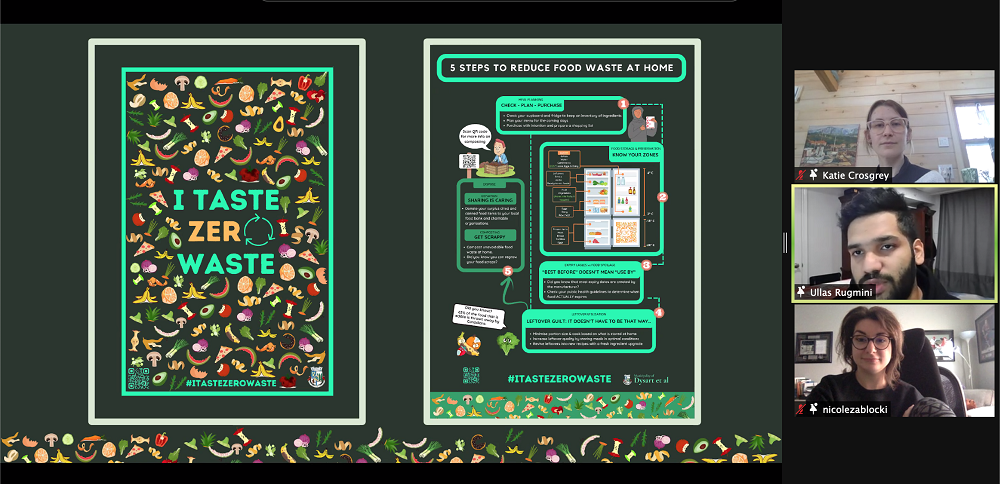Student researchers carried out benthic assessments of area lakes, looked into the viability of using insects to fight invasive species such as eurasian watermilfoil, and considered the benefits of introducing indigenous programming at Abbey Gardens as part of this year’s U-Links Celebration of Research.
Held virtually March 26, this year’s event featured work from 87 students encompassing 18 community-based projects.
Sarah Moret, a sociology student at Trent, gave one of two core presentations. She focused on the lack of supports for eating disorders in rural communities, as reported in last week’s Highlander. Later, Fleming College students Katie Cosgrey, Nicole Zablocki and Ullas Rugmini discussed a new educational campaign they launched in partnership with Dysart et al focusing on food waste reduction.
“The average Canadian household produces approximately 140 kilograms of food waste annually,” Zablocki said. “In Canada, 63 per cent of edible food is thrown away… Ontario’s available landfill capacity is expected to be exhausted by 2034, so we have to do something about this now.”
They say meal planning, proper food storage and preservation and effective disposal options, such as donating and composting, are ways of preventing unnecessary items from getting into landfills.
Kayla McNaughton spent last summer working at Abbey Gardens as an educational programming assistant. She was interested in developing outdoor programs for children to encourage kids to enjoy nature, while recognizing indigenous history in the Highlands.
She developed an ‘educate’, which includes activities, songs and stories that came from indigenous sources and can be adopted into existing programming at Abbey Gardens. She referenced the facility’s beaver program, sourcing an indigenous creation story of how the beaver got its tail to add to what is already taught.
McNaughton recommended Abbey Gardens bring in someone of indigenous background to assist them in their program development.
Many presenters focused on measuring water quality and lake health, but Kaleigh Mooney took a different approach – taking a known problem at one waterbody and coming up with an idea to address it.
Eurasian watermilfoil has been a problem for Drag/Spruce Lake residents for several years. There’s no known way to completely eradicate the invasive aquatic plant, which grows under the water surface, spreads quickly, smells and impedes the growth of a lake’s natural plants and habitats.
Mooney found that a bug indigenous to Canada is effective at limiting the plant’s spread.
“Weevils will lay their eggs on the stem of the plant, then when the eggs hatch, the larvae will bore down. Then, when they pupate, the adults will feed on the foliage … so fragments of the plant will break off, and it will eventually fall to the bottom of the lake where it can’t get any light, so won’t grow.”
Mooney estimates it can take anywhere between 5,000 and 50,000 weevils to battle an already established eurasian watermilfoil system. That puts the cost at anywhere between $5,000 and $50,000.
“There have been attempts to do this in Ontario, but often they don’t start with enough [weevils] and because of that the project tends to fail,” Mooney said. “It’s really important that you go all in if you’re going to do something like this, and know what you’re getting yourself into, because otherwise it’s like throwing your money right into the water with no results.”





